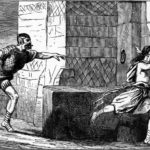
We finally make it to the book of Deuteronomy—a book that in my view best exemplifies how later scribes, in this case the Deuteronomist, modified, rewrote, and even contradicted earlier tellings of Israel’s stories and traditions in an attempt to “up-date” these older traditions so that they better conformed with the religious and political views of their own historical circumstances. But don’t take my word on this matter. Rather, take theRead More


